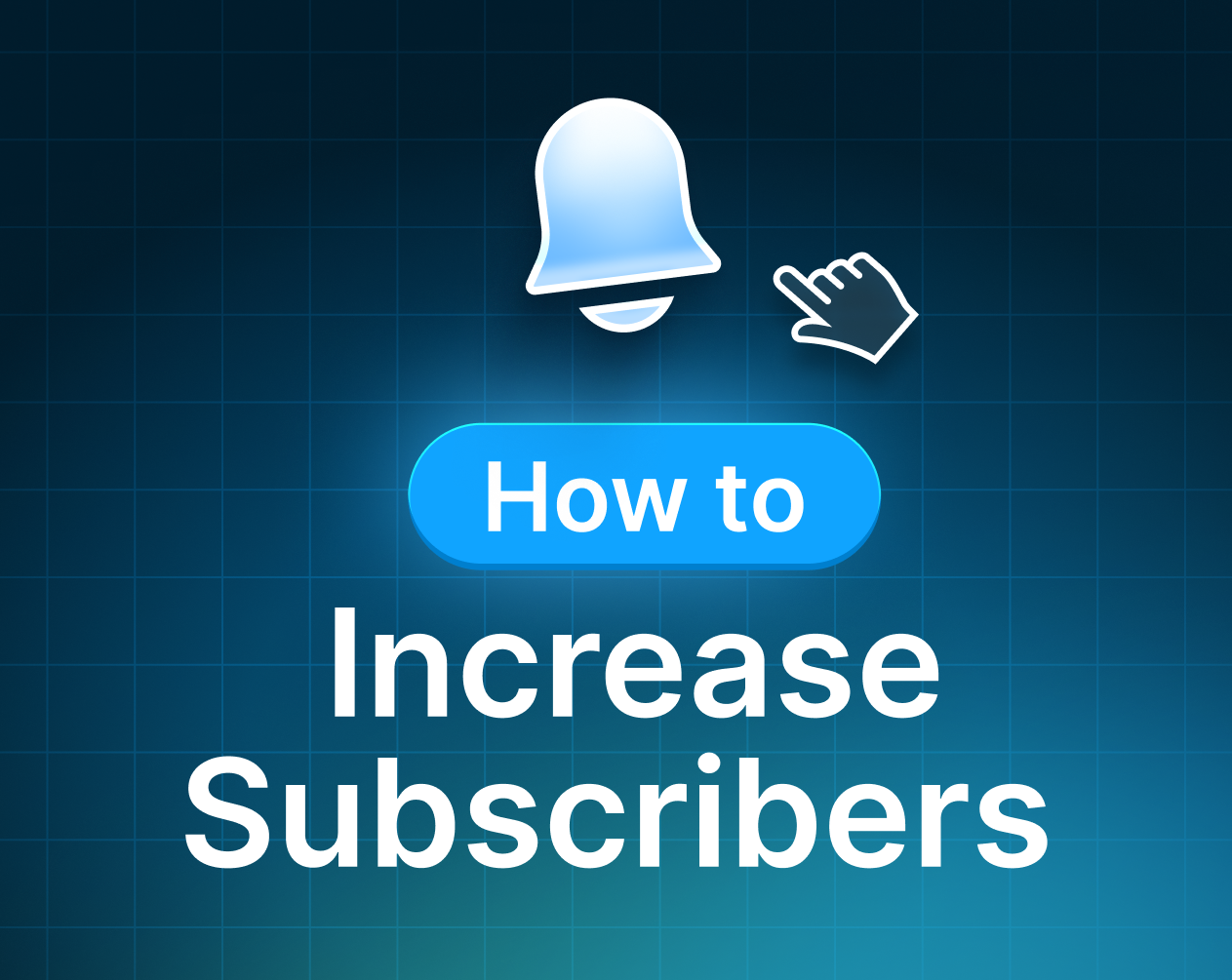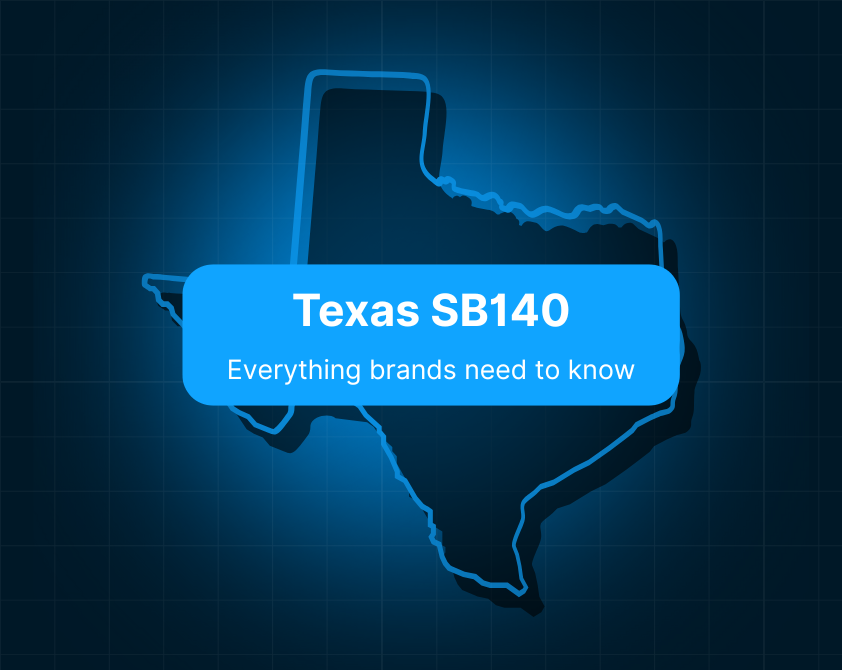Outgrowing Discounts: Better Ways to Win SMS Subscribers
Discount pop-ups have become the default strategy for ecommerce brands trying to grow their SMS lists. But shoppers have caught on, and the standard "10% off your first order" pop-up is losing its impact. Even worse, this approach erodes your margins and conditions customers to only shop when there's a deal.
While opting in a customer can more than double their lifetime value, relying on discounts can erode your margins and hurt your ability to command full price over time.
It's time for a new playbook. Instead of defaulting to discounts, brands can build more valuable SMS lists by offering creative incentives, simplifying consent, and asking at the most natural moment in the funnel.
Understanding the Discount Trap
Today's shoppers are more guarded than ever with their personal information. With 53% of global consumers deeply concerned about how brands handle their data, even the most enthusiastic customers think twice before sharing a phone number or email. Unless the value is crystal clear and instantly compelling, hesitation wins — and your brand misses out on meaningful connections.
It's no surprise that discounts became the go-to incentive for SMS sign-ups, because they're easy to set up, widely accepted, and quick to deliver results. However, these offers tend to attract discount shoppers, especially when presented through pop-ups. The result is lower-intent subscribers who are less likely to become loyal customers.
Discount-driven acquisition also creates a cycle of dependency. Customers begin to expect offers before a purchase, undermining your product's price point and eroding margins, especially for low-to-mid AOV brands. Your SMS list becomes transactional rather than relational.
The fundamental issue is an intent gap. Discount pop-ups may drive opt-ins, but they're targeting people who haven't necessarily decided to buy, or who might just be buying because of the discount. Meanwhile, your best contacts — those who actually complete purchases, especially those who didn't need the discount to convince them — often slip through without being added to your list.
The good news is that you don't need to abandon value-based offers entirely; you just need to rethink how you frame and deliver that value.
Creative Alternatives to Discount Pop-ups
If you're ready to go beyond the default, here are four fresh incentive ideas brands are embracing to capture high-quality SMS subscribers — plus actionable tactics for incorporating them into your marketing funnel.
Cashback
One alternative is cashback, which rewards customers after they buy instead of discounting upfront, preserving your AOV. Unlike traditional discounts, which can feel transactional, cashback comes as a pleasant surprise, building genuine goodwill and delighting customers. Even better, it encourages repeat purchases by offering credit toward a future order, creating a natural retention loop.
Cashback is especially powerful when paired with SMS marketing. By delivering the reward through an SMS-only link after checkout, you capture customers at their peak engagement when they're most invested in your brand. This approach drives SMS opt-ins while boosting the likelihood of a follow-up sale, turning a single transaction into an ongoing relationship.
Ridge, a men's accessories brand, put this into action. Instead of relying solely on upfront discounts, Ridge turned SMS into a channel for post-purchase value by introducing a cashback reward. Their new approach resonated immediately — SMS opt-ins surged by 44%, and their welcome series jumped 37%. By rewarding customers once they're committed, Ridge grew their audience and made each new subscriber more valuable.
How to implement:
- Use Shopify integrations like Postscript to offer cashback.
- At checkout, pair the opt-in ask with a clear, benefit-forward message. Be specific about the reward and when they'll get it: "Want $10 cashback on your next order? Join our SMS list, and we'll send your reward after checkout."
- After sign-up, send an automated SMS with the cashback confirmation and expiration window to create urgency and encourage repeat purchases.
- A/B test the SMS language or cashback amount to find the highest opt-in rate.
Interactive Quizzes
Most customers become overwhelmed by choice almost immediately after reaching a site. Interactive quizzes can cut through the decision paralysis and turn product discovery into a guided conversation that feels more engaging and fun.
By asking the right questions — What's your biggest challenge? What's your budget? What matters most to you? — you're narrowing down the options to only show them exactly what they need.
Quizzes are most effective for capturing SMS opt-ins when they leverage the moment of peak curiosity — right after a customer has answered all the questions and is invested in the outcome. At this point, many brands prompt users to enter their phone number to unlock their personalized results. Others first reveal a teaser or partial result, then ask for SMS opt-in to access the full details. Both strategies can be successful, and the best choice for you depends on the intention of the quiz itself.
It's a tactic that can really move the needle. Take CYSM, a Colombia-based women's shapewear brand. Their "Fit Finder" quiz made it easy for shoppers to find the right size and product, and the results were impressive: over 50,000 new marketing opt-ins across SMS, email, and Facebook, a 10% quiz conversion rate, and a 57% jump in ecommerce revenue in just 60 days.
How to implement:
- Use tools like Octane AI or Lantern to build a product-match quiz.
- Offer the quiz early in the user's browsing session (homepage, collection page, or a banner), before customers get overwhelmed by too many choices.
- At the end of the quiz, offer results via SMS: "Enter your phone number to see your personalized results and unlock exclusive recommendations."
- Sync with Klaviyo or Attentive to trigger flows like personalized product recommendations, reminders to complete purchase, or educational content tied to the customer's needs.
- A/B test different question paths or result groupings (e.g., budget vs. premium product matches) to see what drives the highest engagement.
VIP Access and Exclusives
Another powerful alternative is exclusivity, which works best when it feels personal and authentic. By giving subscribers early access to new drops, limited restocks, or special event invites, you can create memorable experiences beyond the usual promotions. These tailored perks turn customers into loyal fans and transform your brand’s exclusivity into a memorable advantage.
This approach also reinforces brand equity by offering value without devaluing your product. Your subscribers aren't getting cheaper prices — they're getting better access. That subtle shift changes how they perceive both the offer and your brand.
One brand that's leaned fully into this is Nadine Merabi, a luxury fashion label. They positioned SMS as a true VIP channel by teasing upcoming product launches and sales across their marketing channels, but reserving early access and exclusive offers for their SMS subscribers. They created a clear incentive to opt in, and the results spoke for themselves: a 26% CTR and 10% CVR from one early access collection launch, and a 33% CTR with a 24% CVR during a Black Friday VIP drop. Across all campaigns, VIP SMS subscribers consistently outperformed the general list.
How to implement:
- Promote SMS as the only avenue for special perks. Place this messaging on product pages, in on-site banners, or within post-purchase flows using phrases like: "SMS-only early access," "secret drop for insiders," or "exclusive perks via text."
- Launch short VIP events offered exclusively via SMS, but promoted ahead of time across email, social, or on-site banners to drive opt-ins.
- Tag SMS subscribers in your ESP (e.g., Klaviyo) to create exclusivity-based campaigns.
- Test opt-in CTAs like: "Want in on the next drop? Join our VIP SMS list."
The Combo Play
The most successful brands know offering incentives isn't a yes-or-no decision. Instead, they combine strategies to maximize key metrics. They might use incentives higher in the funnel to grow their list, but leverage checkout to collect SMS opt-ins from customers who are already buying — no extra offers needed.
These brands position SMS as part of the brand relationship. Some get strong enough results from optimizing checkout to ditch incentives altogether, while others stack it with quizzes, cashback, or VIP programs.
By optimizing for SMS opt-ins in purchase flows, brands maintain full margins, avoid conditioning discount-seeking behavior, and create a frictionless opt-in experience.
One brand transforming following this path is Denver Modern, a design-forward furniture brand. They added seamless SMS consent through Dataships at checkout and boosted SMS opt-ins from 0.36% to 12%, a 33.3X increase.
How to implement:
- Present clear, benefit-focused consent language that explains the value customers receive from opting in (order updates, exclusive offers, etc).
- Replace traditional "Reply Y" flows with Dataships' one-time code for instant SMS opt-in at checkout.
- Integrate with your SMS platform to sync new subscribers in real-time.
Why Checkout is Your Opt-in Goldmine
Checkout is where your best performing lists get built — and the numbers prove it. Denver Modern compared the performance of their SMS audience from checkout against popup-generated audiences and saw an amazing lift: 2X better CTR and 60% higher AOV.
The reason is simple: At checkout, you're engaging real buyers, not just bargain hunters. These customers have already decided to spend money with you and are more likely to want an ongoing connection with your brand.
This approach works so well because customers are already in "form-filling" mode, entering their address, payment details, and shipping preferences, so adding a phone number or email feels like a natural next step, not an extra hurdle. The timing is perfect, too: shoppers are focused on completing their purchase and securing their order, making them more receptive to staying in touch.
Brands that optimize for consent at checkout are turning an underleveraged moment into a powerful growth engine, laying the groundwork for repeat purchases and lasting customer relationships.
Dataships Transforms Checkout Into a High-Performance Consent Engine
With Dataships, turning your checkout into a high-performance opt-in engine is fast and easy, with no coding or complicated setup required. The platform integrates seamlessly with Shopify and Klaviyo, so you can be up and running in under five minutes.
Dataships goes beyond the default Shopify consent boxes by using dynamic opt-in configurations that adapt to each visitor's location, context, and channel. It automatically manages compliance across regions and maintains a complete audit trail for every opt-in.
For SMS, Dataships streamlines consent collection by replacing clunky "Reply Y" flows with instant verification codes. Shoppers confirm their opt-in with a single tap and move smoothly through checkout — no extra friction, just a better experience for you and your customers.
The beauty is in the low-risk starting point. Dataships lets you A/B test your checkout experience to measure how much your opt-in rates and revenue improve with their approach. Instead of worrying about complicated incentive strategies or sacrificing your margins, you get a straightforward way to grow your list with customers who actually want to hear from you.
The results speak for themselves:
- IQBAR saw a 17X lift in SMS opt-ins, jumping from 0.36% to an industry-leading 6%.
- Denver Modern generated 10,000 marketable contacts after implementation, with Dataships forecasting $31,548 in incremental revenue every month.
Brands using Dataships generate hundreds of thousands of dollars in additional sales — all from a simple checkout optimization. Start A/B testing with Dataships today.













